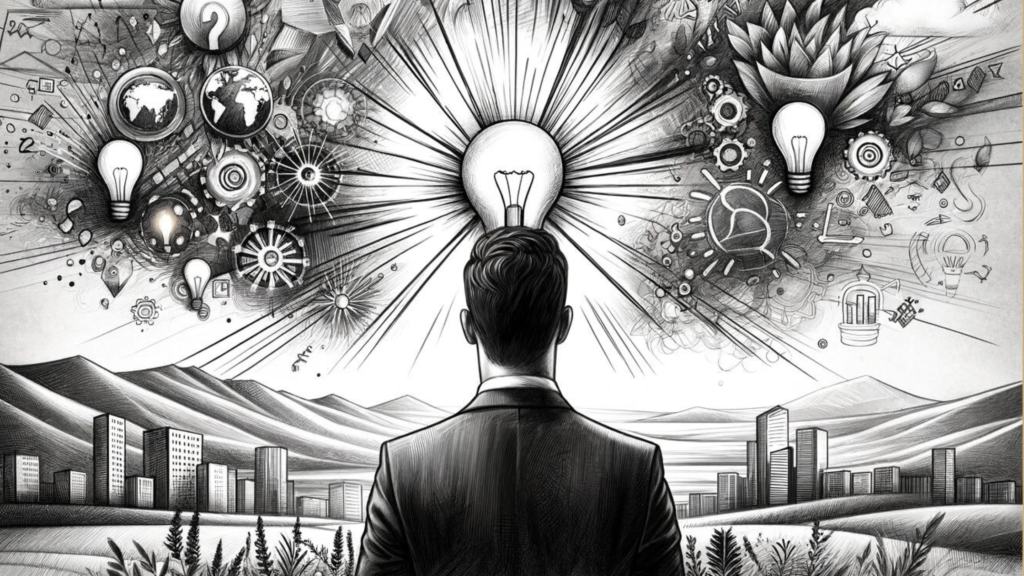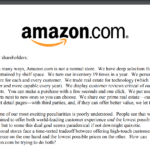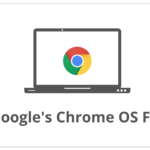Photo by ThisIsEngineering from Pexels
Mega trends are long-term, transformative forces that are shaping the world in significant ways. They are typically global in nature and have the potential to disrupt industries and societies. Examples of mega trends include technological advances such as the Internet of Things (IoT) and artificial intelligence (AI), demographic shifts, and global economic and political developments.
Mega trends can have a significant impact on businesses and organizations, as they can create new opportunities and challenges, and can drive the need for strategic adaptation and innovation. They can also have an impact on individuals, as they can shape the way we live and work, and can affect the availability and nature of jobs and other opportunities.
Identifying and understanding mega trends can be a useful exercise for businesses and organizations, as it can help them to anticipate and prepare for future developments, and can inform decision-making and strategy. It can also be useful for individuals to be aware of mega trends, as they can help to inform career and lifestyle choices.
1. Artificial Intelligence (AI) and Machine Learning (ML):
Artificial intelligence (AI) and machine learning (ML) are technologies that enable computers to perform tasks that would normally require human intelligence, such as recognizing patterns, learning from data, and making decisions.
AI can be divided into two categories: narrow or general. Narrow AI refers to systems that are designed to perform a specific task, such as facial recognition or language translation, while general AI refers to systems that are capable of performing a wide range of tasks.
ML is a subset of AI that involves the use of algorithms and statistical models to enable computers to improve their performance on a particular task over time by learning from data, without being explicitly programmed.
The trend of AI and ML is being driven by a number of factors, including the increasing availability of data, the falling cost of computing power, and the development of more advanced algorithms. These technologies have the potential to transform a wide range of industries and applications, including healthcare, finance, transportation, and manufacturing.
Some of the Usecases of AI & ML today –
- Predictive maintenance in manufacturing: AI and machine learning (ML) are used to analyze data from sensors on factory equipment to predict when maintenance will be needed, reducing downtime and increasing efficiency.
- Fraud detection in financial services: AI and ML algorithms are used and trained to identify suspicious patterns in financial transactions, helping to detect and prevent fraudulent activity.
- Personalized recommendations in e-commerce: AI and ML are used to analyze customers’ purchase history and browsing behavior to make personalized product recommendations.
- Spam filtering in email: AI and ML algorithms are used used to classify incoming emails as spam or non-spam, helping users to avoid unwanted or malicious emails.
- Predictive analytics in healthcare: AI and ML are used used to analyze patient data to predict the likelihood of certain outcomes, such as the likelihood of readmission to the hospital after a discharge. This can help healthcare providers to proactively intervene and improve patient outcomes.
However, the adoption of AI and ML also raises a number of challenges and concerns, including issues around bias, the potential impact on jobs, and the need to address ethical and legal issues. Despite these challenges, AI and ML are expected to continue to be major trends in the coming years, as organizations look to gain a competitive advantage through the use of these technologies.
2. Internet of Things (IoT):
The Internet of Things (IoT) refers to the interconnected network of physical devices, vehicles, buildings, and other objects that are embedded with sensors, software, and network connectivity, allowing them to collect and exchange data. IoT enables these objects to be sensed and controlled remotely across existing network infrastructure, creating opportunities for more direct integration of the physical world into computer-based systems, and resulting in improved efficiency, accuracy and economic benefit.
IoT has the potential to transform a wide range of industries and applications, including transportation, healthcare, manufacturing, energy, and agriculture. For example, in the transportation sector, connected vehicles could communicate with each other and with infrastructure to improve traffic flow and safety, while in the healthcare industry, IoT devices could be used to monitor and manage patients’ health remotely.
According to a report by the Statista, the number of connected IoT devices is expected to reach 29.43 billion by 2030, up from 8.6 billion in 2019. This represents a compound annual growth rate of 15%.


The growth of the IoT is being driven by a number of factors, including the falling cost of sensors and other components, the increasing availability of high-speed internet connectivity, and the growing demand for automation and data analysis in a wide range of industries. As a result, the IoT is having a significant impact on many sectors, including healthcare, transportation, manufacturing, and agriculture.
Top 5 consumer IoT use cases in recent times
- Smart home automation: Consumers are using the IoT to control and automate various aspects of their home, such as lighting, heating, and security.
- Wearable technology: Smartwatches and fitness trackers are common examples of IoT devices that consumers use to track their physical activity and monitor their health.
- Connected appliances: Many household appliances, such as refrigerators, ovens, and washing machines, now have internet connectivity and can be controlled and monitored remotely using a smartphone app.
- Home security: Consumers are using the IoT to enhance the security of their homes, with devices such as smart doorbells, security cameras, and smart locks.
- Connected cars: Many modern cars are equipped with internet connectivity and a range of features that can be controlled and accessed through a smartphone app, such as remote start, location tracking, and diagnostics.
However, the adoption of IoT also raises a number of challenges and concerns, including issues around data privacy and security, the potential for unintended consequences of interconnected systems, and the need for standardization and interoperability. Despite these challenges, the IoT is expected to continue to be a major trend in the coming years, with the number of connected devices expected to reach tens of billions by the end of the decade.
3. 5G
5G is the fifth generation of mobile networking technology, designed to provide faster and more reliable wireless communication than previous generations. Some of the key features and benefits of 5G include:
- Higher speeds: 5G is designed to deliver significantly faster data rates than 4G, with peak data rates of up to 20 Gbps expected. This will enable a wide range of new applications and services that require high-bandwidth connectivity, such as ultra-high-definition video, virtual and augmented reality, and the Internet of Things (IoT).
- Lower latency: 5G is expected to have significantly lower latency than 4G, with round-trip delay times of less than 1 millisecond. This will enable new applications that require real-time or near-real-time communication, such as autonomous vehicles and remote surgery.
- More capacity: 5G is designed to support a much larger number of connected devices per unit area than previous generations, making it well suited to support the growing demand for connectivity from the IoT.
- Enhanced coverage: 5G is expected to provide enhanced coverage and penetration through the use of higher frequency bands, as well as the deployment of small cells and other network enhancements.
The deployment of 5G networks has been increasing in recent years, and it is expected to continue to grow in the coming years. According to a report by the Statista, the number of 5G subscriptions is expected to reach 4.8 billion by 2026, up from just over 1 million in 2019. This represents a compound annual growth rate of over 200%.


The growth of 5G is being driven by a number of factors, including the increasing demand for faster and more reliable mobile connectivity, the growing number of connected devices and the Internet of Things (IoT), and the increasing importance of mobile technology in various industries such as healthcare, transportation, and manufacturing. As a result, 5G is expected to have a significant impact on many aspects of society and the economy in the coming years.
The deployment of 5G networks is still in the early stages, but it is expected to be a major trend in the coming years, with many countries around the world investing in the development and deployment of 5G infrastructure. However, the deployment of 5G also raises a number of challenges and concerns, including issues around the deployment of infrastructure, the potential impact on health and the environment, and the need to address security concerns.
4. Big Data and Analytics
Big data refers to the large and complex datasets that are generated by businesses, organizations, and individuals in the course of their activities. These datasets can include structured data, such as that found in databases, as well as unstructured data, such as social media posts, email messages, and sensor data from the Internet of Things (IoT). The growth of big data is being driven by the increasing volume and variety of data being generated, as well as the falling cost of storing and processing data.
Big data analytics refers to the process of examining large and complex datasets to uncover patterns, trends, and associations, with the goal of improving decision-making and gaining insights. This can be done using a variety of tools and techniques, including machine learning algorithms, statistical analysis, and visualization tools.
The trend of big data and analytics is having a significant impact on a wide range of industries and sectors, including healthcare, finance, retail, and government. For example, in the healthcare industry, big data analytics can be used to identify trends and patterns in patient data to improve diagnoses and treatment plans, while in the retail industry, it can be used to analyze customer purchasing data to improve marketing and sales efforts.
Why Big data & analytics is in top mega trends
- The explosion of data: With the increase in digital devices and the internet of things, there is an exponential growth in the amount of data being generated. This data can provide valuable insights for businesses and organizations if it is analyzed and interpreted correctly.
- Advancements in technology: Advances in technology, such as cloud computing and artificial intelligence, have made it easier and more cost-effective to store, process, and analyze large amounts of data.
- Improved decision-making: By using big data and analytics, organizations can gain a more complete understanding of their customers, operations, and performance, which can lead to more informed and strategic decision-making.
- Increased competition: Organizations in all industries are looking to gain a competitive edge through the use of big data and analytics. Being able to make sense of the data and use it to improve operations can provide a strategic advantage.
- Personalization: Big data and analytics can be used to personalize products, services and experiences, which can increase customer engagement and loyalty.
- Predictive modeling: Big data and analytics enable to predict future outcomes and trends that can help organizations to be proactive and make better decisions.
However, the trend of big data and analytics also raises a number of challenges and concerns, including issues around data privacy and security, the need for skilled data scientists and analysts, and the potential for biased or unethical use of data. Despite these challenges, big data and analytics are expected to continue to be major trends in the coming years, as organizations look to gain a competitive advantage through the use of data-driven insights.
5. Cybersecurity & Privacy
Cybersecurity and privacy are increasingly important concerns in today’s digital world, as more and more personal and sensitive information is being collected, stored, and shared online. Cybersecurity refers to the protection of internet-connected systems, including hardware, software, and data, from attack, damage, or unauthorized access. Privacy refers to the ability of individuals to control their own personal information and how it is collected, used, and shared.
There are a number of factors that are driving the trend of increased focus on cybersecurity and privacy, including:
- The increasing reliance on internet-connected systems: As more and more aspects of our lives move online, the potential impact of a cybersecurity breach or data leak becomes greater.
- The growing sophistication of cyber threats: Cybercriminals are becoming increasingly sophisticated in their methods, using advanced technologies such as artificial intelligence and machine learning to launch more targeted and effective attacks.
- The increasing amount of sensitive data being collected: The rise of the Internet of Things (IoT) and the growing use of data analytics means that more personal and sensitive information is being collected and stored than ever before, increasing the potential risks to privacy.
To address these concerns, organizations and individuals are adopting a range of cybersecurity and privacy measures, including encryption, firewalls, and secure authentication protocols, as well as implementing data protection and privacy policies. Governments and regulatory bodies are also playing a role in promoting cybersecurity and privacy through the development and enforcement of laws and regulations. However, the constantly evolving nature of cyber threats and the increasing complexity of internet-connected systems means that cybersecurity and privacy will remain major areas of focus in the coming years.
Top 5 Cybersecurity attacks in recent times.
- Ransomware attacks: Ransomware is a type of malicious software that encrypts a victim’s files. The attackers then demand a ransom from the victim to restore access to the files; failure to pay could result in the permanent loss of access to the files.
- Phishing attacks: Phishing is a type of cyber attack that involves sending fraudulent emails or creating fake websites in an attempt to trick people into revealing sensitive information, such as login credentials or financial information.
- Data breaches: A data breach occurs when unauthorized individuals gain access to sensitive data, such as customer records or personal information. Data breaches can have serious consequences, including financial loss, reputational damage, and loss of trust.
- Cloud security: As more businesses move their data and applications to the cloud, protecting that data becomes increasingly important. This includes securing the cloud infrastructure as well as the data being stored and transmitted.
- Internet of Things (IoT) security: The IoT refers to the interconnectedness of physical devices, such as smart home devices and industrial equipment, which can be vulnerable to cyber attacks if not properly secured. Ensuring the security of these devices is crucial to protect sensitive data and prevent attacks on the wider network.
Cybersecurity attacks have been a growing concern in recent years, as the use of digital technologies has increased and the sophistication of attacks has grown. According to a report by Cybersecurity Ventures, the number of cybersecurity attacks is expected to increase significantly in the coming years, with the annual cost of cybercrime expected to reach $10.5 trillion by 2025.
Summary
The top 5 technology mega trends are shaping the way we live and work in significant ways. From AI and machine learning, to the internet of things and the growing importance of cybersecurity, these trends are driving innovation and disruption across a wide range of industries. It’s important for individuals and businesses to stay up-to-date on these developments in order to stay competitive and take advantage of the opportunities they present. As these trends continue to evolve, they will no doubt bring about even more exciting and transformative changes in the years ahead.


Mangesh is Product Leader
Full Bio here – https://mangesh.bhamre.in











